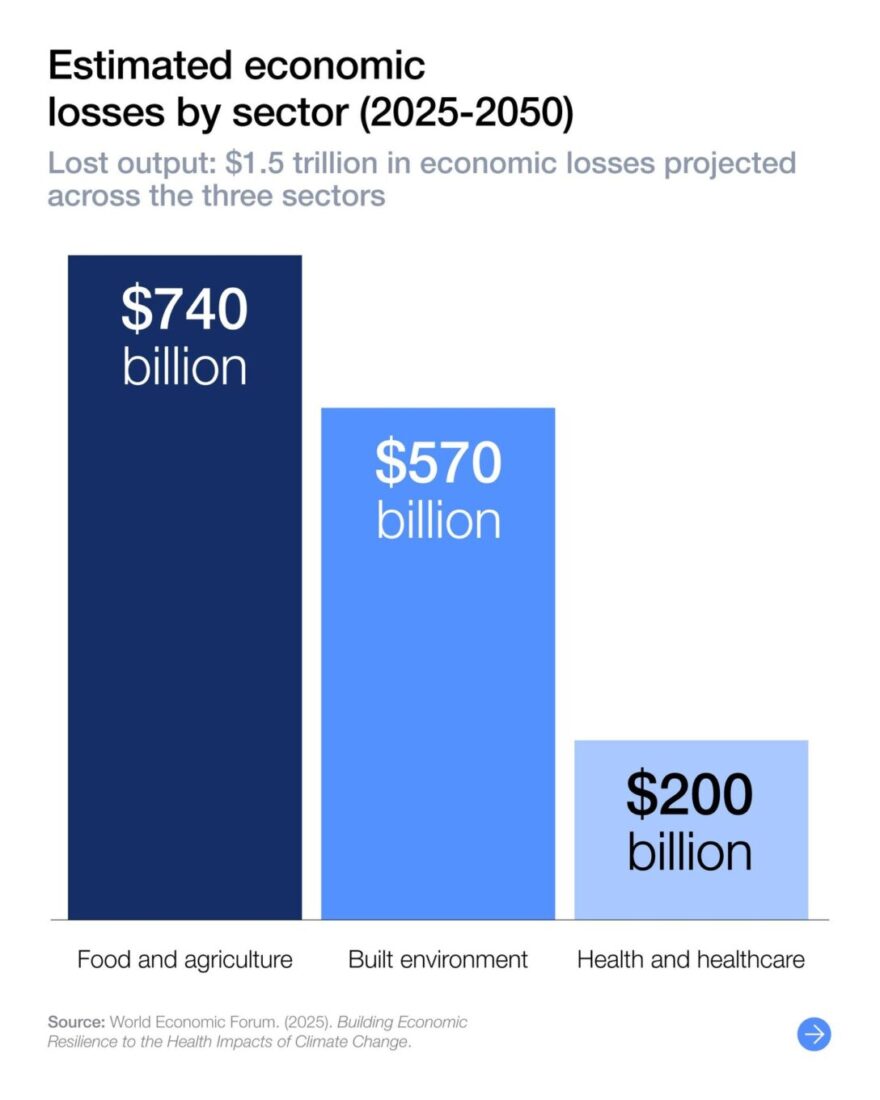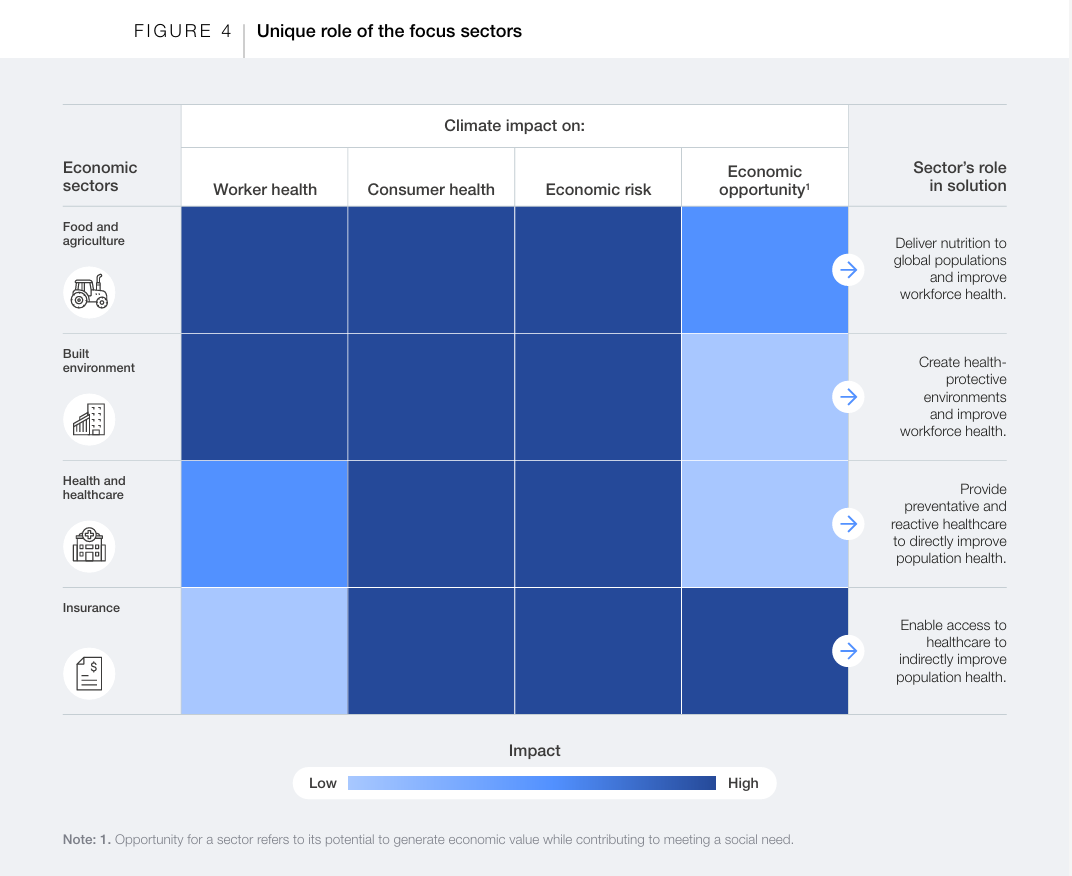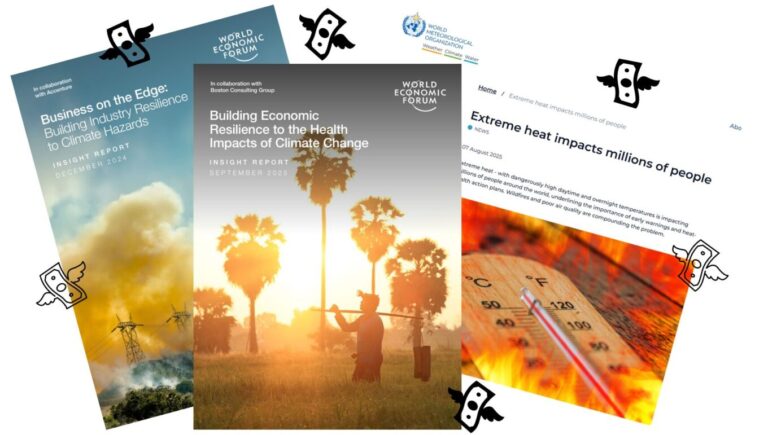As we are experiencing frequent health hazards from extreme heat and disasters caused by typhoons and rainfalls from stationary bands of heavy rain in Japan, abnormal weather patterns driven by climate change are inflicting significant damage on people’s health, livelihoods, societies, and economies worldwide. Here we introduce several analyses of the health impacts and economic losses resulting from climate change.
WMO Presents Health Impacts: “Extreme heat is sometimes called the silent killer”
In August 2021, the World Meteorological Organization (WMO) published a report saying that the number of disasters has increased by a factor of five over the 50-year period (1970-2019), driven by climate change. There were more than 11,000 reported disasters attributed to these hazards globally, with over 2 million deaths and US$ 3.64 trillion in losses. Four years later, in August 2025, WMO Deputy Secretary-General Ko Barrett stated “Extreme heat is sometimes called the silent killer.” Based on research cited in a World Health Organization (WHO) fact sheet indicating that approximately 489,000 heat-related deaths occurred annually between 2000 and 2019, it was suggested that global heat-related illnesses, injuries, and deaths are underestimated.
Climate Change and Extreme Weather can be cause of Economic Loss
Recent climate change and extreme weather events have had a significant impact not only on health risks such as heatstroke but also on society and economic activities. Companies must not only respond to changes in markets and customer demands caused by the impacts of climate changes currently occurring, but also take measures to avoid or mitigate risks in preparation for climate change and extreme weather events that may occur in the future.
The article published in the Nature Communications in September 2023 presented that the climate change-attributed costs of extreme weather over 2000-2019 are estimated to be US$ 2.86 trillion, or an average of US$ 143 billion per year. This finding suggests that the cited estimations regarding the economic costs of climate change are likely to be significantly underestimated.
Significant damages have been occurring. As global warming worsens, so will economic losses and future damages.
Health Impacts of Climate Change – The WEF Report
The World Economic Forum (WEF) published the insight report “Building Economic Resilience to the Health Impacts of Climate Change” in September 2025. This report points out that the combined global impact of climate health effects across the food and agriculture, built environment, and health and healthcare sectors could amount to at least US$1.5 trillion in lost productivity by 2050. It indicates that management challenges surrounding climate risks have gotten into a stage requiring strategic responses.
The WEF in collaboration with Boston Consulting Group (BCG), recognizes that addressing these challenges requires cross-sector collaboration, forward-thinking leadership and decisive action. It outlines scalable, cost-effective interventions for four highly exposed economic sectors: food and agriculture, built environment, health and healthcare, and insurance. The findings indicate that health-related labor shortages and increased illness could inflict massive losses on the global economy through reduced productivity. Estimated economic losses by worker availability in each sector are as follows: up to US$740 billion in food and agriculture, US$570 billion in built environment, and US$200 billion in health and healthcare. In the insurance sector, insurance claims will continue to climb, which could lead to profitability loss.

The impact of climate change on health is already becoming severe. If left unaddressed, climate change could result in 14.5 million excess deaths by 2050. In particular, it has been pointed out that in the most disadvantaged regions against climate change and those susceptible to its impacts, deaths have been 15 times higher over the past decade. Without adaptive action, climate-driven health impacts could erode insurer profitability and push coverage costs higher for consumers across markets. Similarly, if the insurance sector does not implement adaptation measures, the impacts of climate change on health are expected to grow. This will undermine insureres’ profitability and drive up consumers’ insurance premium.
The following figure shows climate impacts on worker health, consumer health, economic risks, and economic opportunities across four sectors. Darker colors indicate greater impact.

The report warns that if companies delay implementing measures to protect workers’ health, it will lead to productivity declines due to health issues and increased adaptation costs. On the other hand, it analyzes that early countermeasures (investment) can reduce risks and also lead to the creation of new markets. While individual companies can take certain actions, addressing climate and environmental challenges requires collaboration among entities due to the varying vulnerabilities across different sectors.
Companies can implement proactive adaptation measures far more cost-effectively if they take a proactive approach. Therefore, the report calls for immediate action to protect worker health, build business continuity, and ensure productivity. Specifically, it urges every chief executive officer, board members, and investors across all sectors to integrate climate-health resilience into core business.
Economic Impacts of Climate Change – The WEF Report: Business on the Edge
Another report “Business on the Edge: Building Industry Resilience to Climate Hazards” that the WEF published in December 2024 reveals the reality that disasters such as extreme heat and floods are threatening corporate fixed assets. If the current trends continue, the world could face US$145 billion in insured losses in 2025, according to Swiss Re. but it is just one example of the economic losses associated with climate change. Companies are compelled to urgently implement measures to mitigate these risks. Climate hazards could drive US$560-610 billion of fixed asset losses per year across listed companies by 2035. If countermeasures are delayed, businesses will face annual earnings loss of 6.6-7.3% by 2035.
This report, considering these projections, identifies significant growth opportunities in climate-related markets, and recommends that public and private sectors collaborate to develop financial solutions that protect natural assets and safeguard vulnerable communities.

How About the Japanese Countermeasures
The impacts of climate change are becoming more severe in Japan each year. Extreme heat warping railroad tracks stops train operations, extreme rainfall causes flooding or damages bridges and roads, and stationary band of heavy rain ruptures water pipes—such abnormal weather caused by climate change is inflicting massive damage on infrastructure like roads, railways, water systems, and power grids, with economic losses continuing to rise. Furthermore, according to the country rankings published by the Notre Dame Global Adaptation Initiative (ND-GAIN), a program of the University of Notre Dame’s Environmental Change Initiative, Japan ranks 138th out of 168 countries in vulnerability of infrastructure against climate change, indicating its vulnerability compared to other countries.
Including Japan, none of the countries and companies can escape from the impact of climate change. Prompt actions on climate change measures and greater investment to address economic losses are required.
References
WMO
WMO Atlas of Mortality and Economic Losses from Weather, Climate and Water Extremes (1970 – 2019)
Published : August 2021
WEF
Building Economic Resilience to the Health Impacts of Climate Change
Published : September 2025
Business on the Edge: Building Industry Resilience to Climate Hazards
Published : December 2024
Other info.
Notre Dame Global Adaptation Initiative (ND-GAIN)
Country Index

